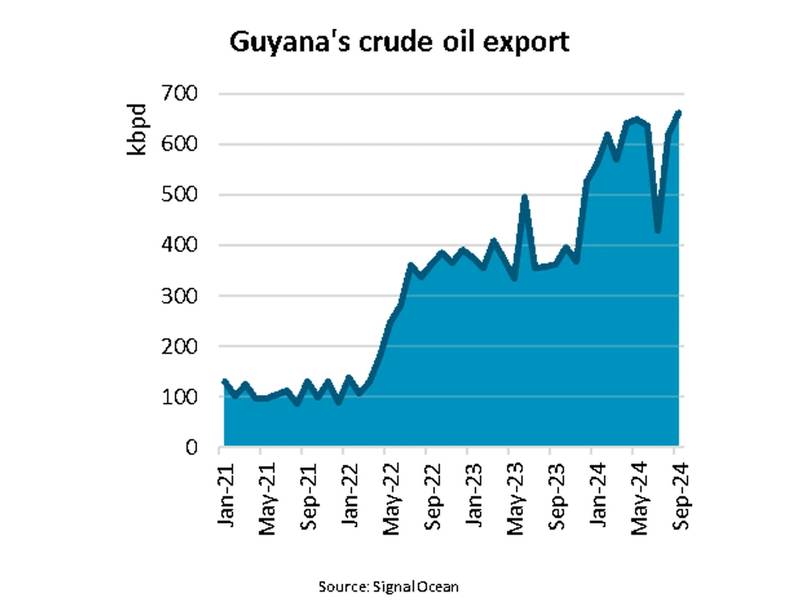Tanker Vessels Flock to Guyana as Oil Exports Soar 58%
“Year-to-date, Guyana’s oil exports have jumped to 598 thousand barrels per day (kbpd), a 58% year-on-year increase, adding to the growth achieved in previous years. Over the past three years, the average annual growth rate has hit 76%,” says Niels Rasmussen, Chief Shipping Analyst at BIMCO.
ExxonMobil first started producing from the Liza field in the Starbroek Block in late 2019. Since then, the operation in the Liza field has been expanded and production in the Payara field added. In total, three Floating Production, Storage and Offloading ships (FPSOs) are currently producing oil in the Starbroek Block.

The two FPSOs in the Liza field have year-to-date exported 371 kbpd while the one in the Payara field has exported 227 kbpd.
“Guyana so far only contributes 1.3% of crude tankers’ global cargo volumes but together with the US, Brazil and Canada the country contributes an increasing share of volumes from the Americas. Year-to-date, global crude tanker loadings increased by 163 kbpd compared with last year but loading from the four countries combined increased by 612 kbpd of which 218 kbpd were from Guyana,” says Rasmussen.
The single largest discharge port for Guyana’s oil is the Chiriqui Grande terminal in Panama, but North Europe has emerged as the largest destination area with nearly 45% of the oil heading there year-to-date. Mediterranean Europe took another 18% while the remaining 38% headed to ports in the Americas.
Guyana’s oil is mainly exported by Suezmax ships but as volumes to North Europe has increased so has the use of VLCCs. Year-to-date, 77% (458 kbpd) has loaded on Suezmax ships with VLCCs getting 23% (138 kbpd). As the VLCC voyages are longer than average, VLCCs benefit from 29% of the tonne miles that Guyana’s export offers.
The oil production has contributed to significant economic growth in Guyana. In the five years since oil production began in late 2019, the country’s economy has grown at an average annual rate of 38%. According to the U.S. Energy Information Administration, 11 billion oil-equivalent barrels of recoverable oil and natural gas has been identified and exploration is continuing. The International Monetary Fund estimates that the economy will grow at an average annual rate of 17% during the next five year.
“ExxonMobil is expected to begin production from the Yellowtail field in 2025 which, according to the International Energy Agency, should lift Guyana’s oil production to 710 kbpd. Guyana should therefore remain one of the main areas of oil supply growth outside OPEC+,” says Rasmussen.
